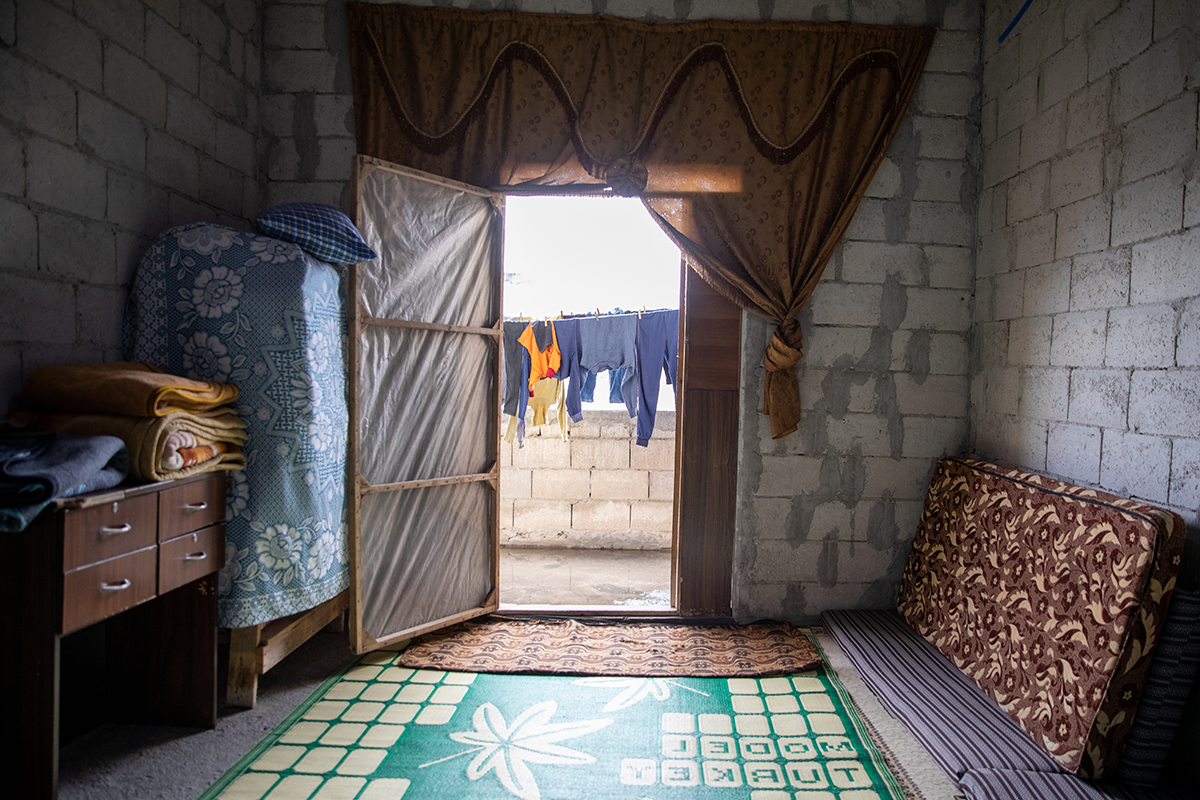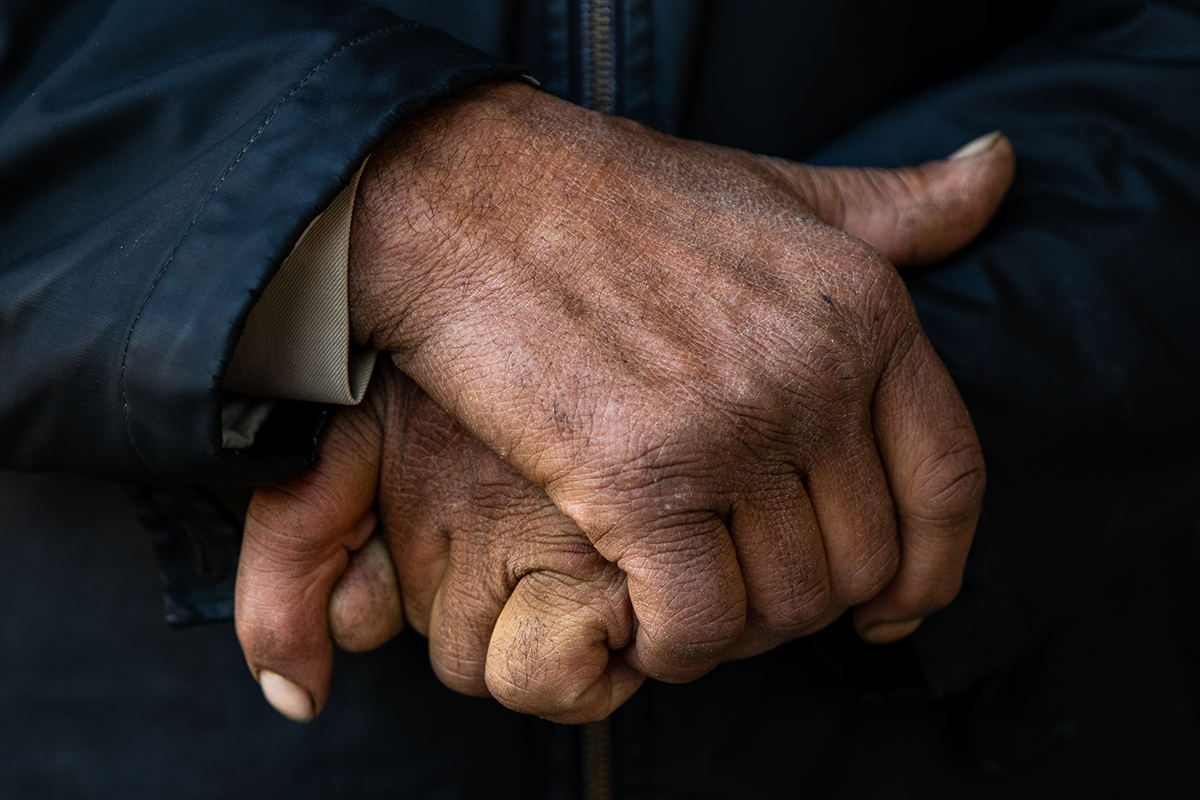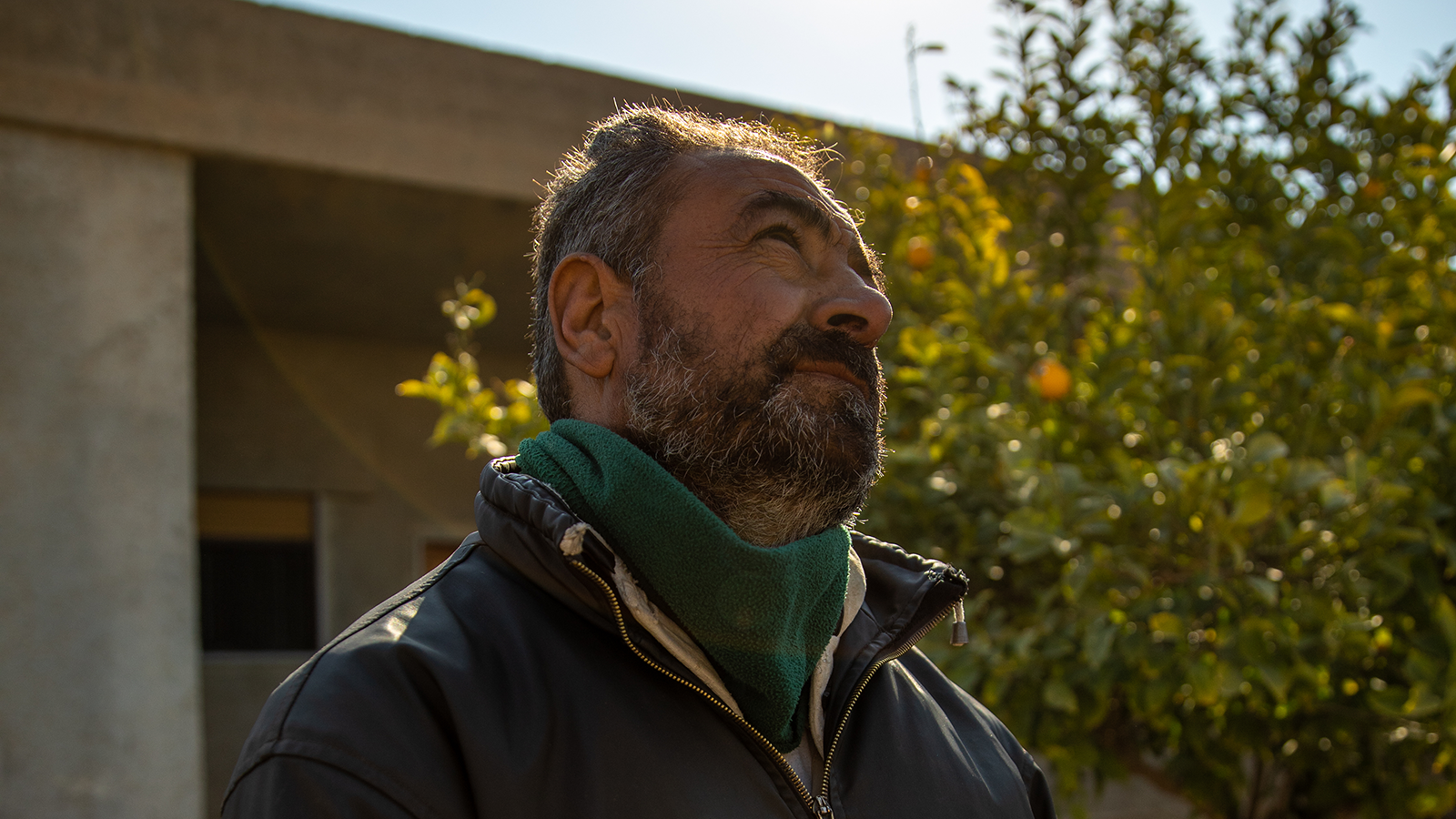Life in Syria over the last 13 years has left millions of people feeling uprooted, even their home country. Here’s how we’re helping them find a sense of home when humanitarian need is at an all-time high.
Shahama* shows us her garden, where she has been growing an assortment of plants and herbs. It sits next to a house that she and her family (including her husband and their six children) built out of mud. They made and installed everything, including the windows, with their own hands. It’s a detail of the story that she’s especially keen about; she repeats it a few times.
For Shahama, who has been living in this displacement camp in northern Syria for more than seven years — her family was among the first 50 to set up tents in the camp — the house is a symbol of stability. It’s a reminder of home which, even in their own country, can feel very far away.

“As our family expanded, the tent would not accommodate us all,” she says, stroking the family’s cat as she recalls the early years of the crisis. Things came to a head in the winter of 2019, which had been especially rainy and caused significant damage to the tents. She and her husband decided they needed more security against the elements.
It was a tough process: “You bring the soil and the water and mix them together, and then you have the frame and you fill it in and wait for it to solidify,” she explains, adding that it took about a month for them to be finished. But the hard work was worth it. Living through an ongoing humanitarian crisis where so much of one’s autonomy is lost, being able to control this one thing gave Shahama and her family some roots in an untethered existence.
“Building this house and trying to make it nice helped us to feel more at home than living in a tent did,” adds Shahama. “My family built this house on our own, without any assistance, so we feel proud of this.”
“It was a much better life than this”
Some of Shahama’s children were born in this camp, never knowing a life outside of the protracted conflict in Syria, which began in 2011. A record-breaking 16.7 million people in the country will require some form of humanitarian assistance in 2024. It remains both the world’s largest refugee crisis and largest internal displacement crisis. Shahama’s family are just some of the 13.8 million people who have been forced to flee their homes in over 13 years of fighting.
In some ways, they’re lucky: They have been able to remain in the same camp for over seven years, giving them a certain sense of stability. But it’s still a cold comfort against all that has been lost. “Before the conflict started, we were totally secure with our livelihoods, with our safety,” Shahama says. “It was a much better life than this.”



“When we had to leave our home, we left with just the clothes that we were wearing. It feels catastrophic to have to leave your home like that,” says Talal*, who lives in the same camp as Shahama. He last saw his home in the Syrian countryside in 2014. Then, he was a barber by trade.
“You have left everything behind and you don’t know where you are going, you don’t even know if you’ll ever be able to go back home again. It was horrible.”
Since being forced to flee, Talal has struggled to find steady work. He looked for a job in the agricultural sector, a popular option in the area. But its popularity meant that there were already many people vying for the available jobs (and many who, unlike Talal, already had experience). He eventually found work as a day-laborer, where he earned about 50,000 Syrian pounds per day (roughly $3 USD). It was something. But it wasn’t enough, especially for Talal, a father of ten (including one child with a serious medical condition).
“I honestly always felt stressed,” he says of the situation, adding that the stress was also felt in his marriage. “It was impossible to think that I had to pay for food or pay for medicine for my sick child, but that I didn’t have enough money for both.”

Frozen in time
Whatever security or stability anyone can find in these circumstances is nothing short of a miracle. As the UN reported in its 2024 Humanitarian Needs Overview for Syria, humanitarian needs are still on the rise, even as the crisis nears its 14th anniversary, amid renewed violence, disease outbreaks, halted humanitarian access, and natural disasters.
The upshot, as the UN’s Office for the Coordination of Humanitarian Affairs (OCHA) reports, is that Syrian civilians are suffering these losses the most. The Syrian pound lost roughly half its value against the US dollar in February 2023, in the wake of the devastating earthquake that affected over 40 districts across ten of the country’s governorates. With supply chains disrupted, access to goods limited, and an increase in logistics costs to get supplies where they’re needed most, inflation has also soared.
Against all of this, the humanitarian response in Syria has suffered from crisis fatigue, with annual response plans underfunded for the last several years. For millions of Syrians who have spent more than a decade in displacement, time has stood still, even as needs — and debts — continued to build up. “This camp just felt like it was in a frozen situation,” says Talal. “We were all just waiting for nothing.”





“I feel that I have gotten my soul back again”
Concern has been in Syria (and also responding to the larger regional effects of the crisis) since 2013. As the crisis has worn on, our work has also developed to focus on both immediate emergency needs and longer-term initiatives designed to give those most affected by the conflict as much security and stability as possible.
Fortunately, one of the most effective forms of aid we can provide is one that travels relatively easily and offers recipients the most flexibility: cash. With the declining economic situation in 2023, we increased our cash response to address the wide number of basic needs.
It’s an invaluable starting point, but our goal is to also help families find their own financial footing (even in the harshest of circumstances) without needing to rely on aid in the long term. That’s where our livelihoods programs come in.
A few months before we spoke with Talal, he began participating in one of these programs, designed to help displaced Syrians develop the skills and resources they need to start their own businesses. The frozen situation Talal described before the launch of this program began to thaw.

“There is a movement, there is change happening,” he says. “You can see how these sessions are reigniting that critical thinking in people, about how to find sources of income.”
Talal received a series of monthly cash transfers ($120 each), which have given him and his family the necessary financial safety net while he learns how he may put his experience as a barber to use in the camp. He describes the program as “a horizon to start from,” one that gives him and his family the ability to find some solid ground in an uncertain situation. While he gets his business off the ground, his children attend one of Concern’s non-formal education centers — safe, trauma-informed spaces that allow kids to be kids (even in dire circumstances) while also preparing them to enter or reenter the formal education system.
“Knowing that my children are attending school helps me feel that they are secure,” says Talal. No amount of money will ultimately bring back everything that he and his family (or the countless families like theirs) have lost, but it is helping to build a more secure future. This, for Talal, is priceless:
“I feel that I have gotten my soul back again.”

Concern in Syria
Concern Worldwide has been responding to the crisis in Syria since 2013. Last year, our programs in the country’s northeastern region reached almost 290,000 extremely vulnerable people with food vouchers, temporary employment, and small business grants (as well as other interventions). We also addressed problems of access to safe, affordable, and reliable supplies of water by rehabilitating six water stations and eight water networks—which support a total of 204,000 people. Similar water rehabilitation in northern Iraq last year reached nearly 117,000 people.
Additionally in 2023, Concern responded within hours to the February 6 earthquake, distributing emergency supplies and providing psychosocial support. One year later, we continue to work with these communities in northwestern Syria on the long-term recovery efforts.
Outside of Syria, our work in Lebanon and Iraq is focused on working with both Syrians and locals in host communities. In Lebanon, which hosts the largest number of refugees in the world by capita, we’ve responded to the country’s worst socioeconomic crisis in decades. Part of this response includes a two-year livelihoods program aimed to increase employment and income-generating opportunities for the most vulnerable households. Recently completed, the program enrolled over 2,000 people.




